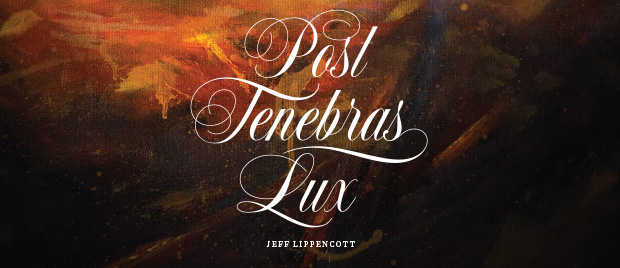Download Post Tenebras Lux: A Symphonic Celebration of the Protestant Reformation

On October 31, 1517, Martin Luther nailed his Ninety-Five Theses to the Castle Church door in Wittenberg, Germany. “One hammer in the hand of an obscure Augustinian monk changed the world forever,” said Dr. R.C. Sproul. Five centuries later, Luther’s boldness for gospel clarity still echoes.
This is why we were pleased to commission Post Tenebras Lux: A Symphonic Celebration of the Protestant Reformation, written by noted composer Jeff Lippencott. In three movements, experience the darkness of the Roman Catholic Church and journey to the glory of Luther’s rediscovery of the gospel and the spread of the Reformation throughout Europe. And in recognition of the significance of the year 1517, this entire symphonic work is 15 minutes and 17 seconds long.
Like the release of Glory to the Holy One and Saints of Zion, Post Tenebras Lux serves as a key part of our ongoing strategy to proclaim the holiness of God and how it impacts all of life. These musical projects seek to honor the transcendent beauty of the Lord while encouraging the church to pursue a new reformation in her worship and praise.
For a limited time, you can download Post Tenebras Lux: A Symphonic Celebration of the Protestant Reformation for free**. Also available on** Spotify, Apple Music, and Amazon Music Unlimited.
Movement I
The European Continent spiraled into darkness after the fall of the Roman Empire in the fifth century. The following millennium witnessed the descent of society, the church, and civilization into an age of corruption. Monophonic melodies or plainchant defined music during this age, and organum—a monophonic melody with another line sung at a fixed pitch, notably a perfect fourth or fifth—became the leading trend in music as the Renaissance approached.
The piece begins with a church chime defining the rule and power of the church during the Middle Ages. The first melody is heard in the bassoon and cello. It carries the form and feel of plainchant that would be heard in a monastery during that time. The melody then transfers to the period-correct recorder with the bassoons following in organum fashion. Chimes are ever present, as the church that watches and lords over all. The movement exhibits a small sense of hope in the woodwinds, but they are overtaken by the swirling chord progression as the church spins down into the depths of corruption and evil. The recapitulation of the melody and the final church bell remind us that darkness continues to cover Christendom.
Movement II
From the outset, the church bell is dominant as it was in the culture of medieval times. The strings are brooding, and then they accelerate and transfer the building tension to the brass. Now we hear the entrance of God’s man, Martin Luther, represented by the oboe taking its turn in the organum style. The tension begins to build in Luther’s life as he searches the Scriptures and struggles with the challenges they pose to his beliefs. The brass punctuates his proclamations against the Roman Catholic Church and its practices, while chimes enter again as the voice of the church opposing his Ninety-Five Theses. At the Diet of Worms (a choral-like cacophony of brass and chimes), Luther’s oboe answers Rome’s charge of heresy with the truth of the gospel and his final declaration of conscience. The movement ends with a rich string resolution—the truth has come to light. Through Martin Luther, God’s gospel of grace through Christ alone will be proclaimed to the whole world. This section ends with the last chord ascending from a minor feel to a major chord in anticipation of what is to come.
Movement III
The first melodic statement is a derivative nod to Luther’s most famous hymn, “A Mighty Fortress Is Our God.” This melody forms most of what is the third movement. In its heroic statement, we set the stage for the fires of the Reformation to be ignited. The gospel begins to spread anew and Luther’s oboe returns, but now it sings in concert with the voices of Calvin (flute) and Zwingli (clarinet). From there, the strings carry the thematic content of the good news through the rolling countrysides and villages of Europe, while the brass takes it to the ends of the earth. Finally, in moving to a halftime tempo, the theme carries both the sweetness and power of the gospel of grace, without forgetting the darkness out of which it came. The melody returns low then builds to the climax of the theme in halftime once again. Luther’s effect on the church and his commitment to the Word of God will be etched in the annals of history. The gospel of Jesus Christ is victorious. His kingdom is forever.
 Mr. Jeff Lippencott is an Emmy-nominated composer responsible for the music of many television series and film scores. In 2003, Mr. Lippencott, along with Mark T. Williams, founded Ah2 Music in Valencia, Calif. Since that time, Ah2 has grown to be one of the most sought-after composing teams in the world, garnering gold and platinum records, multiple ASCAP and BMI Film and Television awards, and two Primetime Emmy nominations, among other industry accolades. In 2015, Mr. Lippencott composed the music for Glory to the Holy One and Saints of Zion, sacred music albums featuring hymns written by Dr. R.C. Sproul.
Mr. Jeff Lippencott is an Emmy-nominated composer responsible for the music of many television series and film scores. In 2003, Mr. Lippencott, along with Mark T. Williams, founded Ah2 Music in Valencia, Calif. Since that time, Ah2 has grown to be one of the most sought-after composing teams in the world, garnering gold and platinum records, multiple ASCAP and BMI Film and Television awards, and two Primetime Emmy nominations, among other industry accolades. In 2015, Mr. Lippencott composed the music for Glory to the Holy One and Saints of Zion, sacred music albums featuring hymns written by Dr. R.C. Sproul.